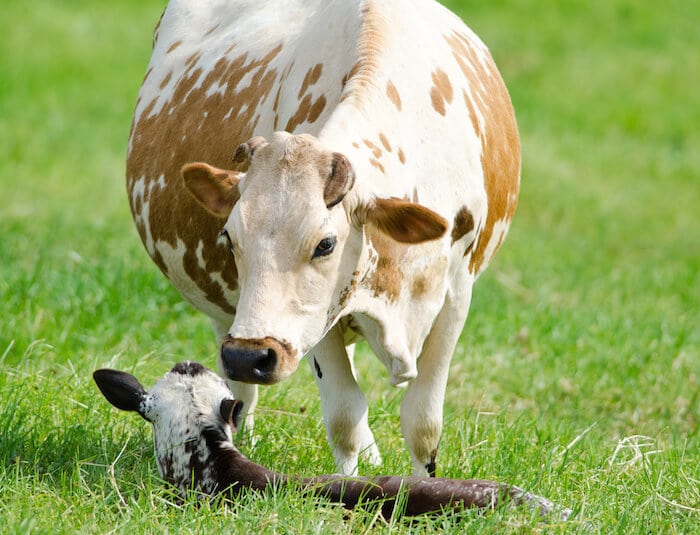No products in the cart.
Oral Health
Vitamin K2 and Breastfeeding: What Every Parent Must Know
Dr. Mark Burhenne
Have you ever wondered why human beings have so many oral health issues? We need braces, teeth cleanings, fillings — you name it. Seems like a pretty high maintenance part of the body, doesn’t it?
In 1925, there was a dentist who felt the same way. His dental practice was just too busy. It didn’t seem right to him that so many people had bad teeth and he suspected something in the modern lifestyle was the cause for all these oral health problems in his patients.
So he and his wife set off on a journey to find people around the world unaffected by the modern diet. Dr. Weston Price and Mrs. Price traveled to the most remote regions of Africa, the barely accessible mountain villages of Switzerland, and the jungles of the Peruvian Amazon.
What they found were people with health so exceptional that they had no need for dentists or doctors. They had exceptional health, weren’t afflicted by modern diseases we see as common, and enjoyed a squared life curve.
These “primitive” people had no concept of oral hygiene as we know it today and yet, had perfectly straight teeth, large airways, and perfectly developed jaws — quite different from the frequent cavities, gum disease, and need for braces which we accept as “normal” today.
As these people left home to move to the city or as trade routes brought modern foods to these communities, without exception, dental decay, crooked teeth, and gum disease would set in immediately with the next generation.
Where the parents had beautiful, broad faces, the generation born after the introduction of the modern diet had narrow dental arches and crowded, crooked teeth and underdeveloped jaws. These children had cavities and behavioral issues, Dr. Price reported. The birthing process was also much longer and more difficult.
So what changed in the modern lifestyle that caused all this? What does it have to do with dental health? And what can we do about it to protect ourselves as we live in this modern age?
How Does Breastfeeding Impact Oral Development?
How long a child breastfeeds can determine whether or not that child grows up to experience a lifetime of obstructive sleep apnea (OSA), cavities, speech issues, TMD, behavioral and emotional issues, and dementia.
This is because breastfeeding is what enables proper development of a baby’s oral cavity, breathing muscles and airway.
Anything other than a breast’s soft nipple in an infant’s mouth can negatively impact oral development.
A soft nipple adapts to the shape of the infant’s mouth, but anything firm requires the mouth to do the adapting.
The movement of the tongue by the infant during breastfeeding also allows for proper development of the swallowing action of the tongue, alignment of the teeth, and shaping of the roof of the mouth. This movement of the tongue is unique to breastfeeding and can’t be simulated with bottles, pacifiers, or sippy cups.
So, not surprisingly, the longer a child breastfeeds, the better the development of oral cavity so there’s plenty of space for teeth to come in without crowding, allowing for a proper bite and a wide open airway.
Straight teeth aren’t just a matter of looks.
What happens when the oral cavity doesn’t develop properly?
Tongue thrusts, a condition where the tongue sticks out at rest. Also called reverse swallowing, this requires extensive speech therapy and orthodontics work.
A bad bite that can cause TMD, jaw pain, and uneven wearing of the teeth, leading them to wear down and cause pain and sensitivity.
Inability to pronounce words, also requiring speech therapy.
Obstructive sleep apnea due to an airway that hasn’t properly developed and collapses easily during complete relaxation of the muscles during the approach to deep stage sleep. OSA in children is related to and perhaps partially causative of ADHD and other behavioral issues, and if not treated, in adulthood can cause anxiety, depression, Alzheimer’s, and dementia.
How Does Vitamin K2 Impact Oral Development?
Every time I see a child in a stroller holding a ziplock bag of Goldfish crackers or saltine crackers, I feel like saying something to the parents, but instead I come home and blog about it.
The problem with the modern diet, as Dr. Price found, is that our packaged food has replaced ancestral nutrient-dense foods.
A specific nutrient called vitamin K2 is responsible for routing calcium into its proper place in the teeth and bones and contributing to proper development of teeth, the oral cavity, and the tongue and breathing muscles.
Why Isn’t Vitamin K2 Naturally Present In Food?
Grass-fed cows is sadly something of the past. Without grass in the diet, cows are not able to produce vitamin K2, and we humans miss out big time.
The modern diet has obliterated sources of vitamin K2-rich foods. That’s because, when we removed animals from the pasture and put them indoors using intensive, confined farming techniques and grain feeding, we inadvertently removed vitamin K2 from our diet.
Humans can’t convert vitamin K1 from plants into essential K2, but animals can — if they have abundant K1 in their diets. And K1 has to come from grass. The grain that most animals are fed now contains a fraction of the necessary K1 found in grass.
When animals grazed on pasture, vitamin K2 was abundant in food supply. Butter, eggs, cheese, and meat, even when eating in small amounts, easily met our bit K2 needs. Now we are starving the for nutrients.
You might think that by taking a calcium supplement, you’re in the clear. But all a calcium supplement does is dump calcium into your body in all the wrong places — namely, in the arteries, contributing to the #1 killer in North America of men and women: heart disease.
Vitamin K2 guides calcium away from building up in the arteries and injects it straight into the bones and teeth where it belongs — protecting our bodies from osteoporosis, cavities, and the narrow airways and poor oral cavity development that all contribute to obstructive sleep apnea.
The ancestral peoples Dr. Price visited all had diets rich in vitamin K2, allowing for proper structural development of their oral cavities, textbook straight teeth, and wide open airways that gave these peoples the deep stage sleep that kept them young and healthy until their very last days.
How Can I Get Vitamin K2?
In order to get K2, it has to come from meat or dairy from an animal that was fed grass in their diet. “Fed a vegetarian diet” is not the same thing as grass fed.
Look for meats and dairy products from animals who were fed grass in their diet. As long as the animal was fed grass, butter, organ meats, and aged and curd cheeses are rich sources of vitamin K2.
Food Sources of Vitamin K2:
- Fish eggs
- Goat cheese, goat milk, and goat butter (here’s a hack for next time you’re grocery shopping — goats are always grass-fed!)
- Grass-fed butter
- Egg yolks from chickens who were grass-fed (even if the chickens were fed herbs, that will do the trick!)
- Elk, venison, and wild boar (also animals that are always grass-fed)
- Sauerkraut and other fermented foods
- Natto (a soy dish popular in Japan)
How to Set Up Your Kids For Optimum Oral Health For Life
Breastfeed as long as you can. Before you have a baby, make sure to assess your diet and health to see if there are changes you can make to prepare you to breastfeed as long as possible.
Ensure the presence of vitamin K2 in the diet, especially early on. Squeeze in that healthy food while they’re an infant and they can’t protest — in almost no time, they’ll be heading to birthday parties and friends’ houses eating all sorts of junk, so the early years are when you can set them up for life.
Don’t use pacifiers or sippy cups due to their harmful impact on your child’s developing oral cavity.
Replace saltine crackers or goldfish. Try apple slices and almond butter, grass-fed salami or cheese cubes instead.
Sources
Vitamin K2 and the Calcium Paradox: How a Little-known Vitamin Could Change Your Life by Dr. Kate Rheaume-Bleue


